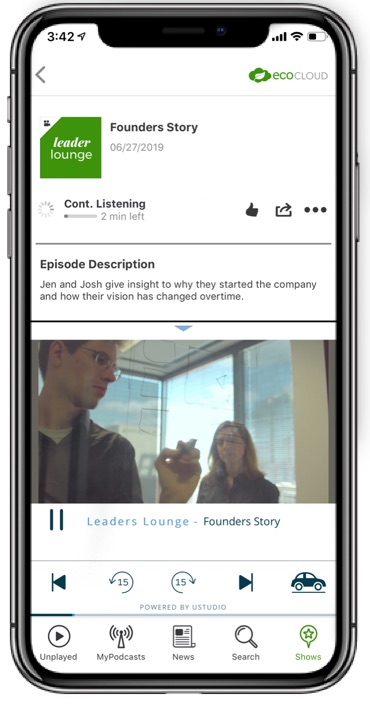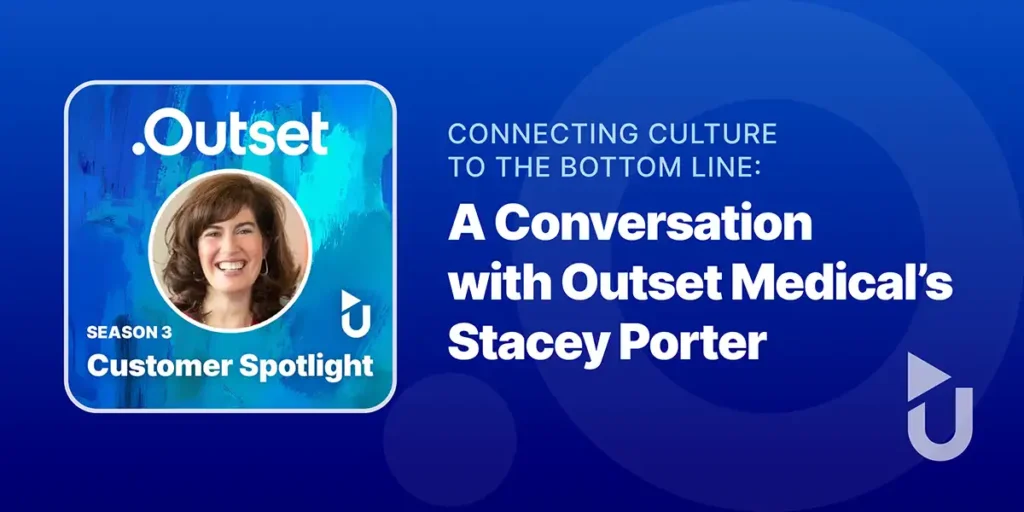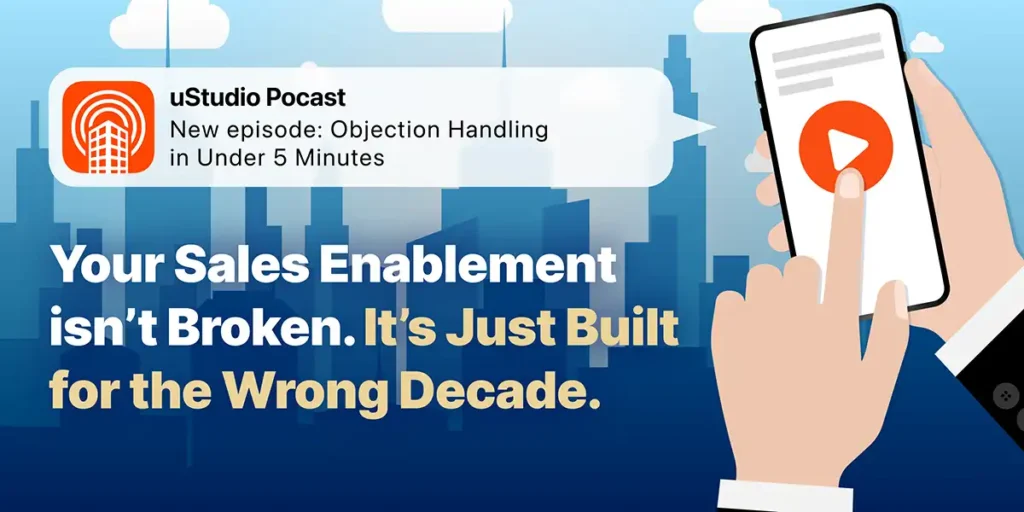Audio or Video – Which is Right For Your Company’s Podcast?
uStudio Staff | Podcasting, Training & Learning, Video Platform, Video Production

As you begin to create content, you might be faced with the decision to use video or audio for distribution. So, which medium is better for your company's podcast? There is no right answer.
Different mediums work better for different goals, messages, and audiences. However, we believe there are major benefits to both types of media that can help you make the best decision for your company's podcast.
Benefits of Audio Podcasting
Easily Consumable
Podcasting is super convenient and easy to consume throughout daily activities - at home, on the go, or at work. Audio requires less focus and commitment than video, allowing your users to better multitask. This is why it’s no surprise listeners are downloading 1 billion episodes per month. As you’ll discover in our Enterprise Podcasting Fact Pack, nearly 25% of adults listen to podcasts in their car and 34% of podcast listeners already listen to podcasts at work. If the goal of your podcast is to increase sales productivity while they are commuting, video obviously isn’t a practical (or safe) idea.
Simple Recording and Editing
Cleaning up dialogue for your listeners can be more discreet on an audio file than it would be for video. This will ultimately reduce your production time, making it easier for you to get content out for your employees in a timely manner. If you are hosting a guest who is new to podcasting or camera-shy, an audio podcast might make them feel more comfortable, also making editing easier for you on the backend. Also, with a video podcast comes additional equipment considerations such as cameras and tripods.
Less Preparation Needed
Without the need to show your face, audio podcasting allows you to read notes or a script while recording. This is something that might be needed if your podcast contains business review updates that include specific data points. Audio podcasting allows hosts to share updates in a conversational format without a lot of prep time or the tyranny of ‘looking camera-ready.’
Benefits of Video Podcasting
Video is Detailed
Actions can speak louder than words and according to the New York Times, 55% of communication is nonverbal. Gestures and body language can be helpful in getting your message across to your audience, and the visual advantage of video allows your emotions to be better represented. It can be argued that the amount of attention required to watch a video rather than listen to an audio file will force your users to focus on the message you are sharing. For training purposes, you might consider using video to show hands-on demonstrations, PowerPoints or screenshots. This is also a nice option if you have any employees with hearing or learning disabilities. If you'd still like to stick with audio, remember you can always link to external resources in your episode description.
Video has SEO Benefits
If your podcast doesn't contain proprietary information, you can pre-publish your content on a public-facing platform as well, such as YouTube. Hosting your company's video podcasts on platforms such as YouTube allows your content to appear higher and more regularly throughout search engines. However, in order to take advantage of this benefit, don’t forget to include the right information on the backend so search engines know how to categorize your video.
Remember, to receive complete protection over your company's content you should only publish your podcasts through a private platform that offers security checkpoints at the mobile app, platform and CDN layers, like uStudio.
Video is Humanizing
If the goal of your podcast is to strengthen relationships between your leadership and employees, you might consider producing a video podcast. When your viewers are reassured that there is a face behind the microphone, it can strengthen their connection with you and your content. Enabling them to put a face to a name will allow you to be better recognizable and memorable. The connection you have with your audience, especially with those who are remote, can help the length to which your media is consumed over time.

Overall, questions that can help you determine your podcast format include:
- What are your business goals for this podcast?
- What do you want your audience to get from listening to this show?
- Who are the individuals who are able to help you with your podcast content? (Remember - video might require more internal resources!)
- How much time do you have to produce this podcast?
- What format will help support you and your team's strengths?
- What will make your show stand out to your employees?
It’s important to recognize that you don’t have to choose just one style. However, within each show, it is important to establish consistency with your content. This will help to initiate listener habits and expectations and keep your show feeling organized overall.
Still unsure of what medium is best for your company's podcast? Lucky for you, video streaming capabilities are now included in uStudio’s podcast mobile and desktop applications. Our convenient dashboards allow users to track and compare both audio and video data to help determine what medium works best for which message. You can more about our video-enabled podcasts and request a demo here.


